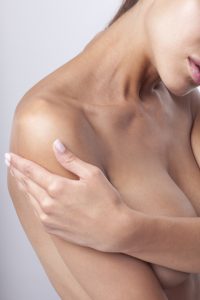 In case the doctor suspects that a suspicious spot on the skin might be melanoma, they will order a skin biopsy. In this procedure, the suspicious looking area will be excised and sent to a lab for evaluation under a microscope.
In case the doctor suspects that a suspicious spot on the skin might be melanoma, they will order a skin biopsy. In this procedure, the suspicious looking area will be excised and sent to a lab for evaluation under a microscope.
Texas Surgical Dermatology, led by board certified dermatologist Dr. Tri H. Nguyen, provides advanced skin care procedures to patients in Houston, Katy, Spring, The Woodlands, Texas, and surrounding locations.
Choosing the Appropriate Biopsy Technique
Various techniques are available to perform a skin biopsy. Aspects such as the size of the impacted area as well as its location on the body will determine which dermatological treatment will be chosen by the doctor. Any biopsy may cause a small scar, and different types of scars will occur due to different types of techniques.
For this reason, it is important that the patient discuss the possibility of scarring with their doctor before undergoing the biopsy.
Irrespective of the biopsy done, the objective should be to excise as much as the suspicious-looking region as possible to allow the pathologist to conclude the correct findings.
A local anesthetic, or numbing medicine, is used while performing a skin biopsy. The medical professional will use a fine gauge needle to inject this drug into the area. The patient will likely feel a small prick and a stinging sensation as the drug enters the bloodstream. But the biopsy should be pain-free after receiving the anesthetic.
Shave (Tangential) Biopsy
This biopsy involves shaving off the topmost layers of skin using a surgical blade. The doctor will apply an ointment on the area of the biopsy. This chemical helps stop the bleeding. Alternatively, they may use a small electric current to cauterize the wound.
A shave biopsy helps diagnose multiple skin conditions and sampling moles with a low risk of melanoma. This type of biopsy is generally not undertaken if the possibility of melanoma is high unless the biopsy blade goes deep enough to get underneath the suspicious region.
At times, the biopsy sample may not have enough thickness to measure the depth of the cancer spread in the skin.
Punch Biopsy
In this type of biopsy, the doctor will use an instrument that looks like a small round cookie cutter to remove a deeper skin sample. The doctor rotates the punch biopsy instrument on the skin until it penetrates all of the layers of the skin. The sample is excised, and the edges of the biopsy wound are typically sealed using sutures.
Incisional and Excisional Biopsies
A doctor will need to undertake an incisional or excisional biopsy to analyze a tumor that might have grown into the deeper skin layers. Such biopsies involve the use of a surgical knife to penetrate the entire thickness of the skin. This procedure excises a slice or wedge of the skin for evaluation. The edges of the wound are usually sutured together.
In an incisional biopsy, only a part of the tumor is eliminated. On the other hand, excisional biopsy excises the entire tumor. This makes it a preferred biopsy technique for suspected melanomas wherever possible. But an excisional biopsy may not always be possible, and the patient may require another type of biopsy.
Laboratory Tests of Biopsy Samples
The samples from the biopsy are sent to a lab, where a doctor (pathologist) will analyze these samples under a microscope to detect the presence of any melanoma cells. In general, a dermatopathologist, who is an expert in evaluating skin samples, will assess biopsy samples.
Board certified dermatologist Dr. Tri H. Nguyen receives patients from Houston, Katy, Spring, The Woodlands, Texas, and nearby areas for skin treatments.
For more information on procedures and treatments offered at Texas Surgical Dermatology PA please call 832.663.6566 or click here to contact our dermatologists. Helping patients in Houston, The Woodlands, Springs, Katy and other surrounding areas of Texas.

